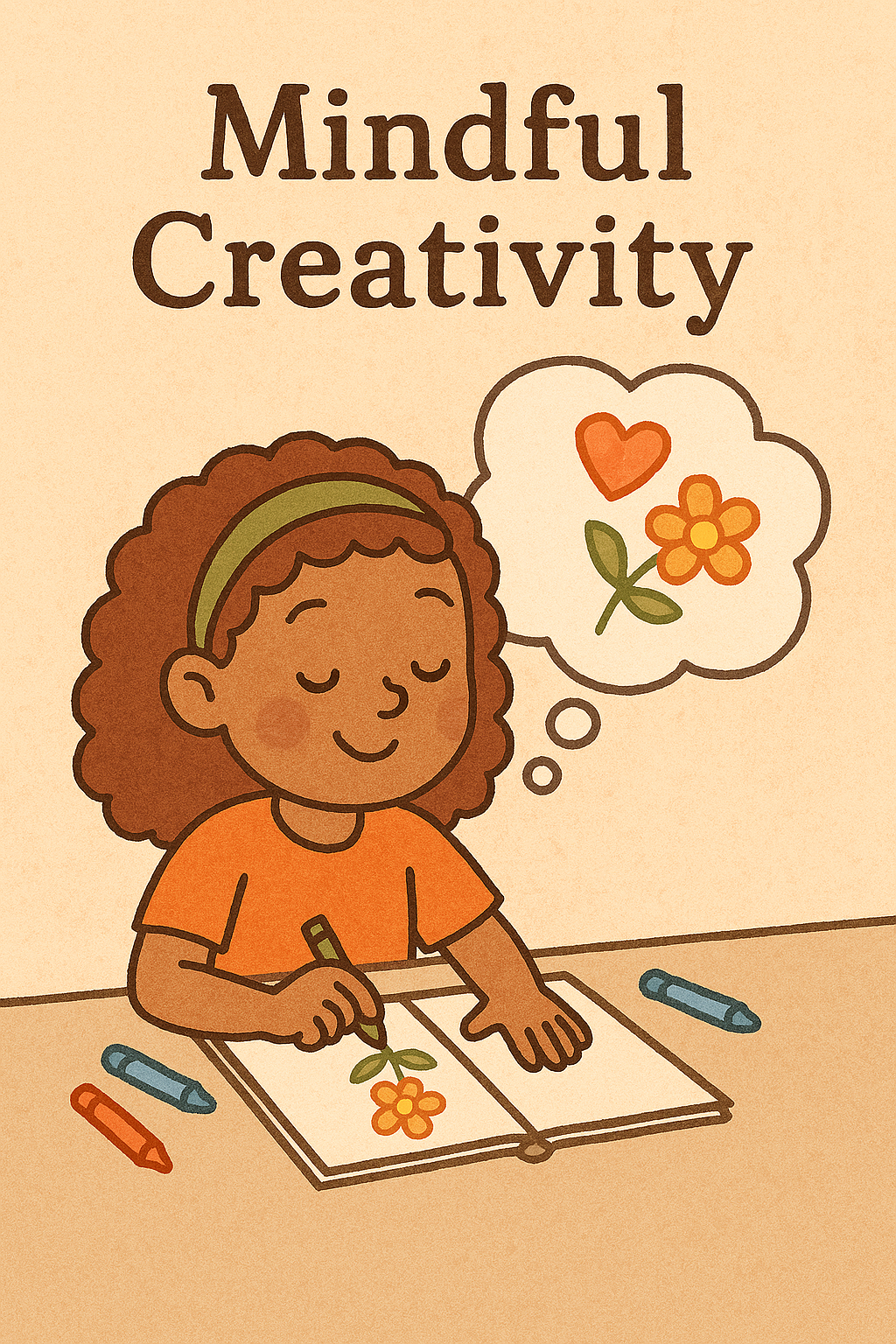Your basket is currently empty!

Why Mindful Art Matters
Art has always been a powerful way for children to express themselves, but when practised mindfully, it becomes even more meaningful. Mindful art for kids blends creativity with presence, giving children space to calm their minds, process emotions, and focus on the joy of making rather than the end result.
When children draw, paint, or colour with full attention, they enter a flow state — a moment where worries fade and imagination comes alive. Instead of being about creating something “perfect,” mindful art is about noticing. It’s the sound of a crayon on paper, the feel of the brush, the way colours blend, or the satisfaction of completing a shape.
The Benefits of Mindful Art for Kids
- Calm and relaxation – Slowing down to focus on art helps children release tension and find a sense of peace.
- Emotional expression – Through mindful art, kids can express feelings they may not yet have the words for.
- Patience and focus – Creating art mindfully helps children stay with a task, improving concentration.
- Confidence and self-esteem – Kids learn to value the process and their effort, rather than judging the finished product.
- Mind-body connection – Paying attention to movement, colour, and texture strengthens awareness of the present moment.
Simple Mindful Art Activities
Mindful art doesn’t need to be complicated or messy. Here are a few easy activities to try at home or in the classroom:
- Colour Breathing
Invite your child to choose a colour that feels calming. As they draw or paint with it, encourage them to imagine “breathing in” that calmness. - Texture Exploration
Provide crayons and textured paper or surfaces. Let children rub over different textures, noticing how each feels and looks. - Slow Painting
Ask your child to paint slowly, focusing on each brushstroke. They might notice the way colours mix or the rhythm of their hand. - Emotion Drawing
Encourage kids to pick colours that match how they feel and draw freely. Afterwards, ask gentle questions like: “What was it like to use those colours?” - Pattern Making
Doodling repeating patterns — circles, waves, spirals — helps children relax and focus, similar to meditation.
Journaling and Mindful Creativity
Journaling blends beautifully with mindful art. A creative journal gives children space to combine words, doodles, and drawings in one place. They might:
- Draw how they feel each day
- Add colourful borders around positive affirmations
- Doodle while reflecting on a moment of gratitude
- Illustrate nature experiences from walks or holidays
Our Feelings Journal is a great resource for this. It provides prompts and open spaces where kids can explore emotions through writing and art, making mindfulness accessible and fun.
Everyday Mindful Art Practices
Here are some simple ways parents and teachers can weave mindful art for kids into daily routines:
- Set aside 10 minutes after school for calm colouring or doodling.
- Use mindful art at bedtime as part of a wind-down routine.
- Create a “calm corner” at home or in the classroom stocked with crayons, paper, and journals.
- Pair mindful art with mindful breathing for kids to help children centre themselves before starting.
- Encourage outdoor sketching as part of a nature journaling practice.
Why It Matters
Mindful art allows children to slow down, explore emotions, and celebrate creativity. It builds resilience, nurtures calm, and gives kids healthy tools for managing their inner world. Journaling turns this into a reflective practice, strengthening mindfulness and self-esteem.
By encouraging mindful art for kids, parents and teachers open up opportunities for deeper connection, emotional growth, and joyful self-expression.